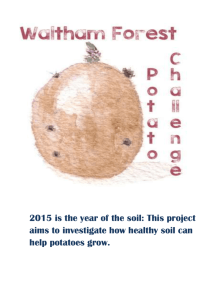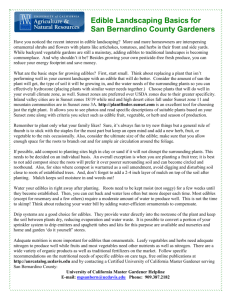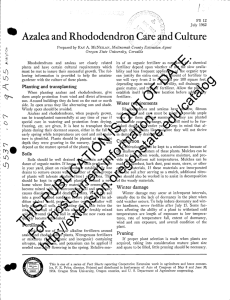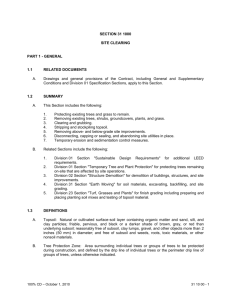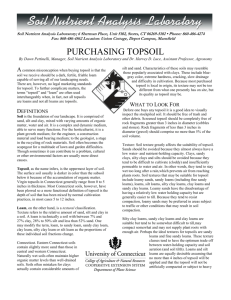The Dirt on Good Soil
advertisement
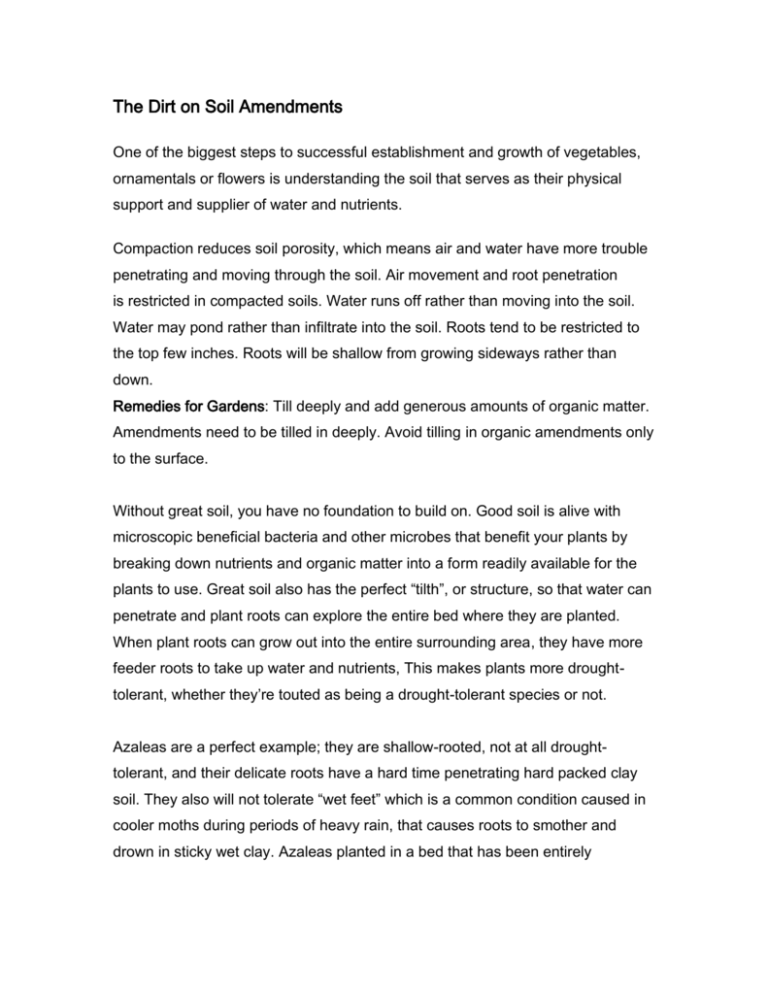
The Dirt on Soil Amendments One of the biggest steps to successful establishment and growth of vegetables, ornamentals or flowers is understanding the soil that serves as their physical support and supplier of water and nutrients. Compaction reduces soil porosity, which means air and water have more trouble penetrating and moving through the soil. Air movement and root penetration is restricted in compacted soils. Water runs off rather than moving into the soil. Water may pond rather than infiltrate into the soil. Roots tend to be restricted to the top few inches. Roots will be shallow from growing sideways rather than down. Remedies for Gardens: Till deeply and add generous amounts of organic matter. Amendments need to be tilled in deeply. Avoid tilling in organic amendments only to the surface. Without great soil, you have no foundation to build on. Good soil is alive with microscopic beneficial bacteria and other microbes that benefit your plants by breaking down nutrients and organic matter into a form readily available for the plants to use. Great soil also has the perfect “tilth”, or structure, so that water can penetrate and plant roots can explore the entire bed where they are planted. When plant roots can grow out into the entire surrounding area, they have more feeder roots to take up water and nutrients, This makes plants more droughttolerant, whether they’re touted as being a drought-tolerant species or not. Azaleas are a perfect example; they are shallow-rooted, not at all droughttolerant, and their delicate roots have a hard time penetrating hard packed clay soil. They also will not tolerate “wet feet” which is a common condition caused in cooler moths during periods of heavy rain, that causes roots to smother and drown in sticky wet clay. Azaleas planted in a bed that has been entirely amended will always out-perform azaleas that are crammed into a small planting hole surrounded by hard-packed clay. So what does “great soil” look like? And what is it made of? “Organic matter” is a loose term and often causes great confusion. Should I buy cow manure, Nature’s Helper, or maybe Miracle Gro soil? And just what is compost, anyway? How often have you asked yourself those questions? The answer is- if you need a lot, buy bulk compost. What the actual ingredients are that make up the compost can vary so don’t fret too much about it. It is important to make sure it has gone through the composting process though so that it is not still in the form of raw materials. Good compost has gone through a heat and broken down into rich organic matter. There are many ingredients and materials that make good compost- the important thing is that it is alive as I mentioned earlier. You’ll get the best value by purchasing bulk material. One cubic yard of good compost in bulk will cost approx $70 less per yard than bagged material that is purchased in small amounts! Be careful when purchasing “topsoil” as many places have their own idea of what “topsoil” is made of. We’ve had customers tell us that they’ve ordered topsoil to be delivered and received fill dirt full of rocks and debris instead. Not at all the same thing- not even close. Always know what you are buying. Look at it, pick some up and feel it, and smell it. It should smell good and earthy. It should look dark and coarse. A final piece of advice- DO NOT fall prey to those .99 cent bags of cheap “topsoil” at the store. They are made up of junk. They smell bad and they set up hard as concrete once they have gotten wet and dried out a few times.



